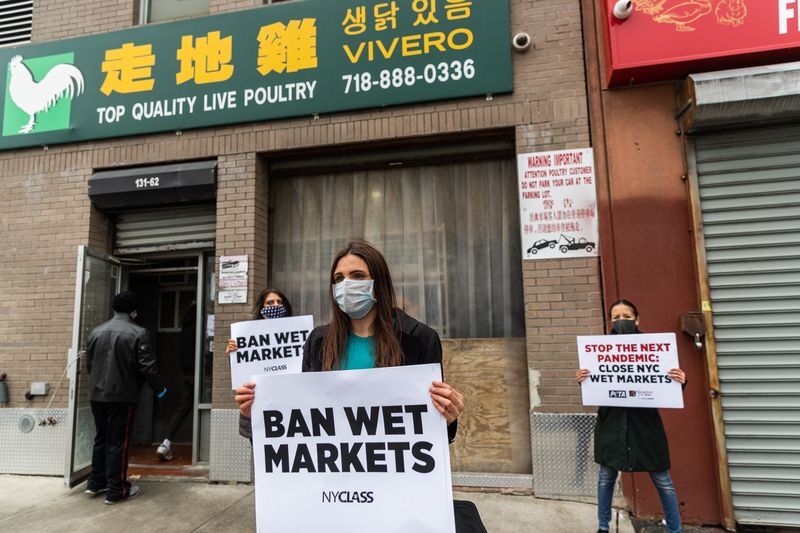The Next Pandemic Is Closer Than We Think
Courtesy of Jeenah Moon/Getty Images
Protesters advocate for policy to protect against another pandemic.
March 3, 2021
As we approach the one-year anniversary of March 13th, or in other words, the day life ended as we know it, the only thing on peoples’ minds is the end of the COVID-19 pandemic. Yet, what is scarier is the fact that there is a great chance that we may experience another pandemic in our lifetime, especially if we do not heed the warnings and lessons learned from our current situation.
In a December 2017 study, it was estimated that 75% of emerging infectious diseases originate in wildlife, also known as zoonotic diseases. As humans continue to encroach on wildlife habitats, the line between civilization and the natural world is becoming dangerously blurred. Deforestation, urbanization, mining and the general invasion of humans into the natural world increase the frequency that we interact with disease-carrying wildlife. Without this encroachment, we otherwise would not be coming into contact with these animals, eliminating the risk of catching a disease from them.
Not only are we encroaching on the natural world, but we are also bringing wild animals into closer contact with us through exotic pets, wet markets and factory farming. In wet markets that are not properly set up and combine different animals, it gives way for the spread of zoonotic diseases that can potentially lead to another pandemic.
Amidst the COVID-19 pandemic, research involving zoonotic diseases and the study of pathogens has obviously spiked as it is extremely necessary and effective. However, what happens when this pandemic is over? There has been an astronomical amount of spending on research now as the coronavirus continues to rock our world, but I can only imagine that as time passes and the pandemic gets left behind, there will be little long-term investment in the science that works to prevent these outbreaks. Scientific research relies on funding to take place, even if it is the most important research in the world. It is unfortunate that not all research for the sake of human good can be funded, but it is a sad reality.
After the $16 trillion dollars that the coronavirus has cost the United States, it seems that any cost to prevent another pandemic would be worth it. However, as we see time and time again, logic seemingly does not matter to a vast majority of people. Even something as simple as wearing a mask to prevent the spread of a lethal virus has not even been adopted as a universal practice almost a year after the pandemic hit. Humans encroaching on the natural world continues to give way to some of the worst disasters in history, but there is a strong lack of recognition that makes me fear for our future.
The phrase “necessity is the mother of invention” has been a phrase echoed throughout the past year, especially involving the development of the vaccine. It rings true, as we have seen the vaccine production expedited to meet global demand and save the lives of millions. However, there needs to be a recognition that we cannot get to this point again, especially as another pandemic in our future is not far-fetched. There needs to be a preemptive case to prevent this from happening again.
In addition to scientific research that needs to be done in order to learn more about zoonotic diseases, there needs to be more public information regarding the dangers of being in close contact with certain types of animals. Catching a zoonotic disease from an animal can seem like such a far-fetched occurrence, but state fairs are an American tradition that can actually become a breeding ground for new illnesses. The National Association of State Public Health Veterinarians actually concluded that there were approximately 100 human infectious disease outbreaks involving animals in public settings in the United States from 2010-2015. As soon as COVID-19 settles down, I foresee these fairs and festivals returning, hopefully with the necessary precautions.
Unfortunately, the only hope for long-term investment in scientific research is to remember how we feel right now. With almost a year passing since the pandemic hit, I can say with all certainty that I have thought about its end every day. I could not imagine having to go through another one knowing what it was like.
It is awful that we had to get to this point, but maybe one of the only positives that can come out of this pandemic is to learn from our mistakes. It’s pretty bad when we have to hope that the coronavirus has scarred us enough to actually realize the need for investment in our future and to have respect for our earth, but it is our last resort.











